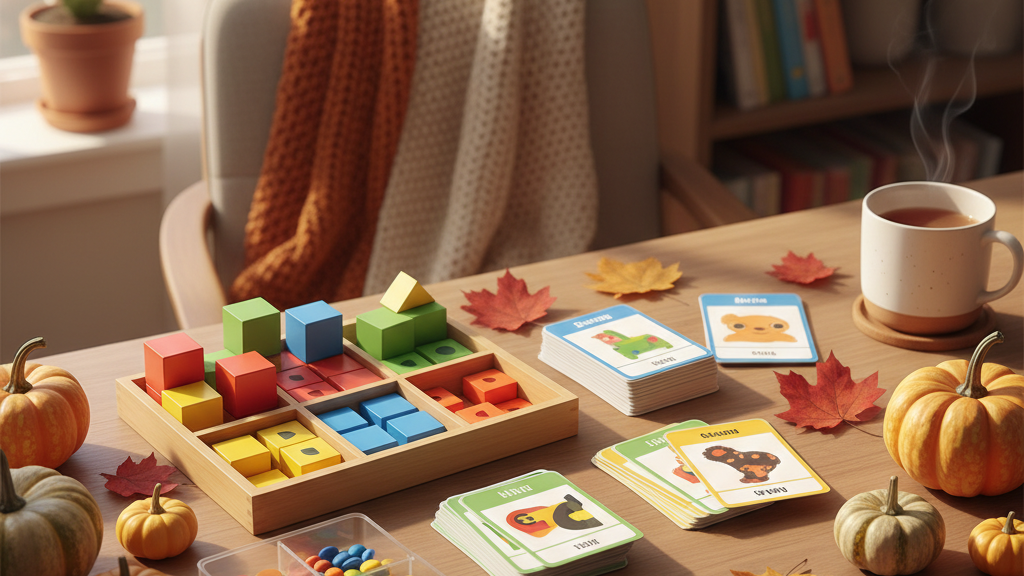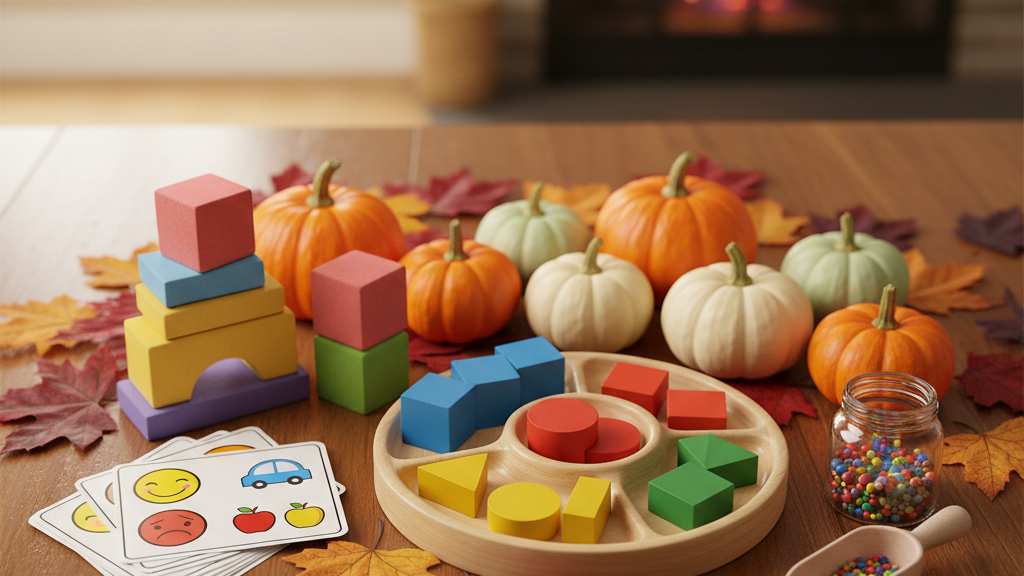
October brings cooler weather, festive traditions, and a change of pace for many children as schools close for fall breaks. While these short vacations can be exciting, they also introduce new routines and unexpected transitions that may be challenging for children receiving Applied Behavior Analysis (ABA) therapy. Supporting your child through these changes can help maintain progress, reduce stress, and create meaningful opportunities for growth.
Understanding the Challenges of October Breaks
For children who benefit from ABA therapy, consistency and routine play an essential role in learning and development. School breaks, even brief ones in October, can disrupt established schedules and create uncertainty. Common challenges may include:
- Changes in daily structure – With no school, the predictable rhythm of morning routines, classroom activities, and afternoon schedules may shift.
- Limited access to peers – Without the social setting of school, children may experience fewer opportunities for interaction with classmates.
- New environments – Families may plan trips, attend community events, or visit relatives during breaks, which can introduce new settings and expectations.
- Difficulty transitioning back – Returning to school after a break can be challenging, particularly if routines were significantly altered during time off.
Recognizing these potential challenges is the first step toward creating a supportive plan for your child during October breaks.
Strategies for Supporting ABA Transitions
When school is out of session, parents and caregivers can take proactive steps to make transitions smoother while keeping ABA strategies consistent. Here are effective ways to support your child during October school breaks:
1. Maintain a Routine at Home
Even if school is not in session, try to keep a structured daily schedule. This may include consistent wake-up times, regular mealtimes, and planned activities throughout the day. Using visual schedules can be especially helpful for children who rely on predictability.
2. Incorporate ABA Goals into Daily Activities
School breaks provide opportunities to practice skills in natural settings. For example, if your child is working on communication goals, you can practice during family meals or community outings. If self-help skills are a focus, routines such as getting dressed, brushing teeth, or helping with simple household tasks can reinforce progress.
3. Prepare for New Environments
If you plan to travel or attend community events during October, prepare your child in advance. Social stories, visual supports, and role-playing can help them understand what to expect. This preparation can reduce anxiety and increase confidence when facing unfamiliar settings.
4. Schedule Consistent ABA Sessions
Whenever possible, continue ABA sessions during school breaks. These sessions can be adapted to new environments, such as community settings or at home, ensuring that therapy remains consistent. Maintaining therapeutic support during breaks helps prevent regression and provides opportunities to generalize skills.
5. Plan Social Opportunities
Without the built-in social structure of school, consider arranging playdates, family activities, or community events that promote social engagement. Guided interactions with peers can help your child practice communication, sharing, and cooperative play while having fun.
6. Support the Transition Back to School
As the break comes to an end, gradually reintroduce school routines to make the transition smoother. This could include adjusting bedtime and wake-up times, preparing school materials, and revisiting morning routines a few days before school resumes. Previewing the return to school with visual supports can also ease the shift back.
Creating Positive October Break Experiences
October breaks can also be a time of growth, bonding, and joy. With thoughtful planning, you can turn this period into a meaningful experience that supports both your child’s progress and your family’s connection. Consider:
- Fall-themed activities – Pumpkin carving, leaf collecting, or seasonal crafts can be fun ways to practice fine motor skills and following instructions.
- Community involvement – Attending local fall festivals or visiting farms can expose your child to new environments while working on social and communication skills.
- Family traditions – Sharing family traditions around autumn holidays provides opportunities to teach routines, practice patience, and create positive memories.
By approaching October school breaks with flexibility and intention, you can transform them into opportunities that support your child’s ABA journey.
Partnering with ABA Professionals
Every child is unique, and the strategies that work best may vary. Collaborating with your ABA team during school breaks can ensure continuity of care. Your team can help identify which skills to focus on, adapt strategies for new environments, and provide resources for maintaining progress during time off.
Maintaining open communication with your ABA providers allows for tailored support, so your child can benefit from consistent guidance even when schedules change.
Conclusion
October school breaks present both challenges and opportunities for children receiving ABA therapy. By maintaining routines, incorporating ABA goals into daily life, preparing for transitions, and partnering with professionals, families can ensure that progress continues during these short but important pauses in the school year. With thoughtful planning, these breaks can become times of growth, learning, and family connection.
Contact us today to learn how we can support your child during school breaks and beyond.

